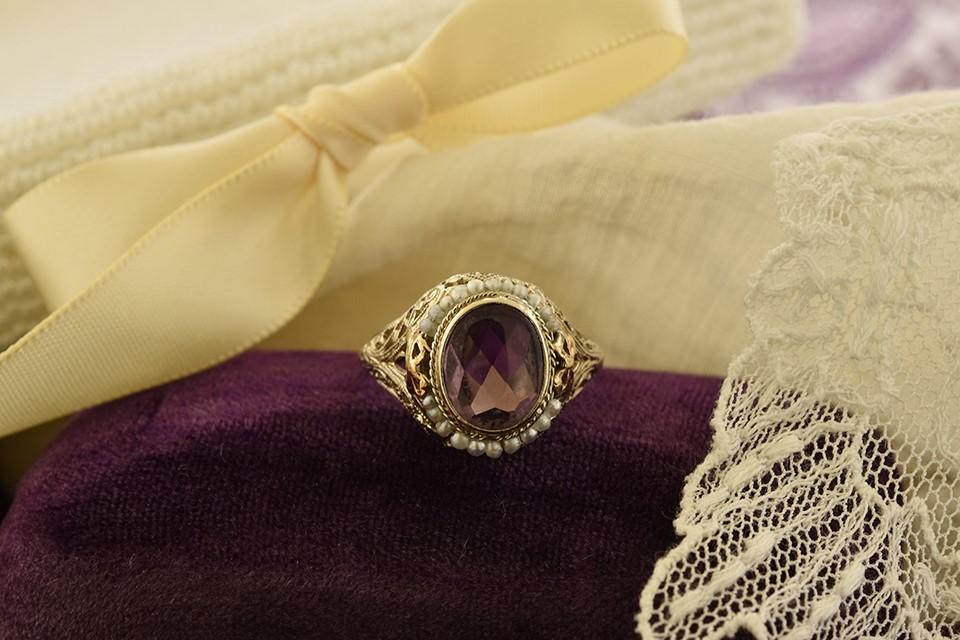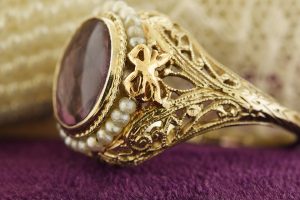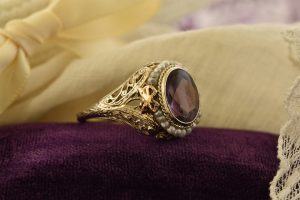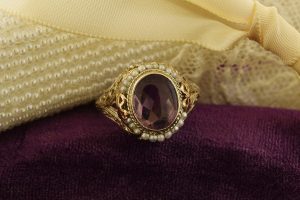Joden Girl
Baubles, Bling and Symbolic Things
I have always loved three-stone rings. My sentimental side vibes with the symbolism of each stone… one for the past, one for the present and one for the future. Aesthetically, I appreciate the balanced, symmetrical appeal of a classic three-stone. This traditional style has captured hearts for centuries.
The inventory at Joden boasts more than one of these nostalgic rings. In fact, we have them in every department… antique, estate, and of course, modern. Today, I’ve selected a unique duo. Each one offers it’s own unique charms. I can’t wait to see which one you prefer.
First, we have a modern beauty by J. B. Star. Made from platinum, this classic style is crisp and clean. Each diamond is secured with four prongs with the center stone rising above the sides. Weighing 1.21 carats, the main diamond has been certified by the Gemological Institute of America. Shining bright, this diamond has a color grade of J and a clarity grade of VS2. The two side diamonds have a combined weight of .65 carat. Keeping with the modern style, the high-polished shank of the ring offers a nice weight and feel.
Simplistically sophisticated, this ring works perfectly as an engagement ring or an anniversary ring. Sitting tall on the hand, it’s moderately priced at $7,000.00.
Showing a softer side is this late Edwardian three-stone beauty. Comprised of platinum, this ring sits low and hugs the finger. Three diamonds are nestled within a diamond accented border. The European cut center diamond weighs approximately .85 carat, and the two side stones offer an additional 1.00 carat of sparkle. Eighteen single-cut diamonds surround the three main stones, amping up the brilliant bling.
The vintage feel of this ring is absolutely charming. The shank is narrow, adding to the delicate feel of the ring. Priced at $6,100.00, this antique gem is tough to beat.
Both rings have so much to offer… it’s difficult to choose! Do you vibe with the vintage flair of this Edwardian three-stone or are you smitten with the classically clean feel of that modern marvel? Which one is your favorite… this or that? Check them both out on our site today!
“You can go to a museum and look, or come to us and touch.”
Written by Carrie Martin
Photos by Dana Jerpe



















